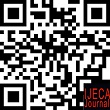The Implementation of Creative Problem Solving Model in Teaching of Biodeviersity at Senior High School
Abstract
Abstract: Making students to be creative thinking need exercises in the form of tasks. Creative problem solving is the constructivist learning model to create creative, imaginative, and innovative solutions in the aim of training and teaching individuals to think differently in solving problems.The research focus was to find out students' learning outcome and creative thinking skills using creative problem solving-based learning. The participants were tenth grade of senior high school in the school year 2019/2020 which were divided into science class as the control class (N=33), and X IPA 2 class as the experimental class (N=33). The research instrument used was a description test on biodiversity content with creative problem solving indicators, namely Clarify, Ideate, Develop, and Implement. Quantitative data analysis used was MANOVA test at a significant level of 5%. The results of this study were the average values for each indicator of creative thinking and learning outcomes in the experimental and control classes showing that the control class was lower than the experimental class. It means that learning outcomes and creative thinking skills through creative problem solving had an impact than the classes using creative problem solving. Therefore, there was a significant influence and a relationship among the creative problem-solving model, creative thinking skills, and learning outcomes which was indicated by the value of. 0.000<0.05.
Keywords
Full Text:
DOWNLOAD [PDF]References
Aguilar, D., & Turmo, M. P. (2019). Promoting social creativity in science education with digital technology to overcome inequalities: A scoping review. In Frontiers in Psychology ,. 10, Issue JULY). https://doi.org/10.3389/fpsyg.2019.01474
Arbia, S. M., Maasawet, E. T., & Masruhim, M. A. (2020). The development of learning tools oriented industrial revolution 4.0 to improve students’ creative thinking skills. International Journal of Sciences: Basic and Applied Research (IJSBAR), 51(2), 117–131.
Astra, I. M., Raihanati, R., & Mujayanah, N. (2020). Development of electronic module using creative problem-solving model equipped with HOTS problems on the kinetic theory of gases material. Jurnal Penelitian & Pengembangan Pendidikan Fisika, 6(2), 181–194.
Audrey, E. S., Tuaputty, H., Rumahlatu, D., & Papilaya, P. M. (2019). The improvement of learning motivation and creative thinking skills of senior high school students through modified problem based learning model. Journal for the Education of Gifted Young Scientists, 7(4), 1175–1194.
Bai, H., Mulder, H., Moerbeek, M., Kroesbergen, E. H., & Leseman, P. P. M. (2021). Divergent thinking in four-year-old children: An analysis of thinking processes in performing the Alternative Uses Task. Thinking Skills and Creativity, 40, 100814. Doi. https://doi.org/10.1016/j.tsc.2021.100814.
Basadur, M., Gelade, G., & Basadur, T. (2014). Creative problem-solving process styles, cognitive work demands, and organizational adaptability. The Journal of Applied Behavioral Science, 50(1), 80–115. Doi: 10.1177/0021886313508433.
Chan, S., & Yuen, M. (2014). Creativity beliefs, creative personality and creativity-fostering practices of gifted education teachers and regular class teachers in Hong Kong. Thinking Skills and Creativity, 14, 109–118. https://doi.org/10.1016/j.tsc.2014.10.003.
Conradty, C., Sotiriou, S. A., & Bogner, F. X. (2020). How creativity in STEAM modules intervenes with self-efficacy and motivation. Education Sciences, 10(3), 70. doi:10.3390/educsci1.
Fatmawati, B. (2020). Creative problem solving; implemented study in biology content. Journal of Physics: Conference Series, 1567(4)issue? Page?, 042079. doi:10.1088/1742-6596/1567/4/042079.
Fatmawati, B., Ariandani, N., & Sasmita, M. (2021). Student’s creative thinking ability with the lesson study design in biology content. Jurnal Penelitian Pendidikan IPA, 7(2), 287–292. https://doi.org/10.29303/jppipa.v7i2.708.
Garcês, S. (2018). Creativity in science domains: a reflection. Atenea, 517, 241–253.
Gholami, H., Yunus, A. S., Ayub, A. F. M., & Kamarudin, N. (2019). The impact of lesson study on achievement in mathematical problem solving and higher order thinking skills (HOTS) among foundation level students. International Journal of Innovation, Creativity and Change, 10(2), 289–313.
Golnabi, L. (2016). Creativity and insight in problem solving. Journal of Mathematics Education at Teachers College, 7(2) page?.
Gupta, P., & Sharma, Y. (2019). Nurturing scientific creativity in science classroom. Resonance, 24(5), 561–574. https://doi.org/10.1007/s12045-019-0810-8.
Haka, N. B., Nisa, K., & Masya, H. (n.d.). Improving The Habits of Mind of Senior High School Students toward Biology Learning through Creative Problem Solving Learning Model Based on Mind Mapping: Pre-Experimental Study. Assimilation: Indonesian Journal of Biology Education, 5(1), 34–43. https://doi.org/10.17509/aijbe.v5i1.44010.
Heliawati, L., Afakillah, I. I., & Pursitasari, I. D. (2021). Creative Problem-Solving Learning through Open-Ended Experiment for Students’ Understanding and Scientific Work Using Online Learning. International Journal of Instruction, 14(4), 321–336. https://doi.org/10.29333/iji.2021.14419a.
Hu, R., Xiaohui, S., & Shieh, C.-J. (2017). A study on the application of creative problem solving teaching to statistics teaching. Eurasia Journal of Mathematics, Science and Technology Education, 13(7), 3139–3149. DOI 10.12973/eurasia.2017.00708a.
Kapoor, N., Bansal, V. K., & Jain, M. (2020). Development of creative problem solving-based framework for site planning in hill areas. Frontiers of Architectural Research, 9(2), 450–466. https://doi.org/10.1016/j.foar.2019.12.003.
Khalid, M., Saad, S., Hamid, S. R. A., Abdullah, M. R., Ibrahim, H., & Shahrill, M. (2020). Enhancing creativity and problem solving skills through creative problem solving in teaching mathematics. Creativity Studies, 13(2), 270–291. https://doi.org/10.3846/cs.2020.11027.
Kristanti, F., Aini, C., Shoffa, S., Khabibah, S., & Amin, S. M. (2018). Developing creative-problem-solving-based student worksheets for transformation geometry course. International Journal on Teaching and Learning Mathematics, 1(1), 13–23. Doi: 10.18860/ijtlm.v1i1.5581.
Kupers, E., Lehmann-Wermser, A., McPherson, G., & van Geert, P. (2019). Children’s creativity: A theoretical framework and systematic review. Review of Educational Research, 89(1), 93–124. . DOI: 10.3102/0034654318815707.
Laisema, S., & Wannapiroon, P. (2014). Design of collaborative learning with creative problem-solving process learning activities in a ubiquitous learning environment to develop creative thinking skills. Procedia-Social and Behavioral Sciences, 116, 3921–3926. https://doi.org/10.1016/j.sbspro.2014.01.867.
Lee, C. K., & Shea, M. (2016). An Analysis of Pre-service Elementary Teachers’ Understanding of Inquiry-based Science Teaching. Science Education International, 27(2), 217–237.
Lin, C. S., & Wu, R. Y. W. (2016). Effects of Web-Based creative thinking teaching on students’ creativity and learning outcome. Eurasia Journal of Mathematics, Science and Technology Education, 12(6)page? . https://doi.org/10.12973/eurasia.2016.1558a
Lin, C.-Y. (2017). Threshold Effects of Creative Problem-Solving Attributes on Creativity in the Math Abilities of Taiwanese Upper Elementary Students. Education Research International, 2017. https://doi.org/10.1155/2017/4571383
Lince, R. (2016). Creative thinking ability to increase student mathematical of junior high school by applying models numbered heads together. Journal of Education and Practice, 7(6), 206–212.
Lobo, L. (2016). The Influence Of Learning Model (Creative Problem Solving Vs. Based Learning) Department of Pancasila Civic Education, Teacher Training and Education Faculty of Nusa Cendana University. International Conference on Education: Education in The 21st Century: Responding To Current Issues, 530–541.
Loc, N. P., Uyen, B. P., Tong, D. H., & Ngoi, H. T. (2020). A Teaching Process of Fostering Students’ Problem-solving Skills: A case study of teaching the equation of a line. Universal Journal of Educational Research, 8(5) page?. https://doi.org/10.13189/ujer.2020.080510
Martins Gomes, D., & McCauley, V. (2021). Creativity in science: A dilemma for informal and formal education. Science Education, 105(3), 498–520. https://doi.org/10.1002/sce.21614.
Munastiwi, E., Yunos, J. M., Alias, M., & Paimin, A. N. (2021). Effect of Creative Independence Problem Solving (CIPS)-Based Training Module on Professionalism of Rural Indonesian Elementary School Teachers. Al-Bidayah : Jurnal Pendidikan Dasar Islam, 13(1)page?. https://doi.org/10.14421/al-bidayah.v13i1.616
Ndiung, S., Sariyasa, Jehadus, E., & Apsari, R. A. (2021). The effect of treffinger creative learning model with the use rme principles on creative thinking skill and mathematics learning outcome. International Journal of Instruction, 14(2)page?. https://doi.org/10.29333/iji.2021.14249a
Phaksunchai, M., Kaemkate, W., & Wongwanich, S. (2014). Research and development of a training package for developing creative problem solving of undergraduate students. Procedia-Social and Behavioral Sciences, 116issue?, 4824–4828. 10.1016/j.sbspro.2014.01.1032.
Pizzingrilli, P., Valenti, C., Cerioli, L., & Antonietti, A. (2015). Creative thinking skills from 6 to 17 years as assessed through the WCR test. Procedia-Social and Behavioral Sciences, 191, 584–590. https://doi.org/10.1016/j.sbspro.2015.04.498.
Rajagukguk, K. P., Lubis, R. R., Kirana, J., & Rahayu, N. S. (2021). Pelatihan Pengembangan Media Pembelajaran Model 4D Pada Guru Sekolah Dasar. Jurnal Pengabdian Kepada Masyarakat, 2(1)page?.
Resien, C., Sitompul, H., & Situmorang, J. (2020). The effect of blended learning strategy and creative thinking of students on the results of learning information and communication technology by controlling prior knowledge. Budapest International Research and Critics in Linguistics and Education (BirLE) Journal, 3(2), 879–893. https://doi.org/10.33258/birci.v3i2.997.
Ritter, S. M., Gu, X., Crijns, M., & Biekens, P. (2020). Fostering students’ creative thinking skills by means of a one-year creativity training program. PLoS One, 15(3), page? e0229773. https://doi.org/10.1371/journal.pone.0229773.
Salmon, A. K., & Barrera, M. X. (2021). Intentional questioning to promote thinking and learning. Thinking Skills and Creativity, 40, 100822. https://doi.org/10.1016/j.tsc.2021.100822.
Sandika, B., & Fitrihidajati, H. (2018). Improving creative thinking skills and scientific attitude through inquiry-based learning in basic biology lecture toward student of biology education. JPBI (Jurnal Pendidikan Biologi Indonesia), 4(1), 23–28. https://doi.org/10.22219/jpbi.v4i1.5326.
Shieh, R.-S., & Chang, W. (2014). Fostering student’s creative and problem-solving skills through a hands-on activity. Journal of Baltic Science Education, 13(5), 650.
Sidek, R., Halim, L., Buang, N. A., & Arsad, N. M. (2020). Fostering scientific creativity in teaching and learning science in schools: A systematic review. Jurnal Penelitian Dan Pembelajaran IPA, 6(1), 13–35.
Simarmata, P. (2022). The Effect of Models Creative Problem Solving and Problem Based Learning to Improvability Problem Solving Students. JMEA: Journal of Mathematics Education and Application, 1(1), 31–43. :doi: http://dx.doi.org/10.30596%2Fjmea.v1i1.9167
Singerin, S., Huliselan, E. K., & Latununuwe, A. (2020). Development of Integrated Science Learning Devices Using Problem Based Learning (PBL) Learning Model Through Lesson Study. Edu Sciences Journal, 1(2), 124–132. Doi:https://doi.org/10.30598/edusciencesvol1iss2pp124-132.
Sophonhiranrak, S., Suwannatthachote, P., & Ngudgratoke, S. (2015). Factors affecting creative problem solving in the blended learning environment: A review of the literature. Procedia-Social and Behavioral Sciences, 174,issue? 2130–2136. https://doi.org/10.1016/j.sbspro.2015.02.012.
Susyla, D., & Syofiana, M. (2019). Developing students critical thinking ability through lesson study. Journal of Physics: Conference Series, 1320(1), page?012005.
Tandirerung, W. F., Manuahe, C., & Raturandang, J. O. (2021). Penerapan Model Pembelajaran Creative Problem Solving (CPS) Untuk Meningkatkan Hasil Belajar Siswa. JSPB Bioedusains, 2(2), 144–152. doi: 10.21070/jicte.v5i1.1474.
Tong, D. H., Loc, N. P., Uyen, B. P., & Truc, C. le. (2020). A case study of developing students’ problem-solving skills through addressing real-world problems related to fractions in primary schools. International Journal of Scientific and Technology Research, 9(2), 2809–2818.
van Hooijdonk, M., Mainhard, T., Kroesbergen, E. H., & van Tartwijk, J. (2020). Creative problem solving in primary education: Exploring the role of fact finding, problem finding, and solution finding across tasks. Thinking Skills and Creativity, 37,issue? Page? 100665. https://doi.org/10.1016/j.tsc.2020.100665.
Wilany, E., & Rahman, A. (2020). The Effect of Creative Problem Solving Method Towards EFL Students’reading Comprehension. Anglo-Saxon: Journal of the English Language Education Study Program, 11(1), 102–109. https://doi.org/10.33373/as.v11i1.2388.
Wimmer, L. (2016). Problem solving as a sufficient condition of the creative process: A case for closer cooperation of creativity research and problem solving research. In Frontiers in Psychology . 7,issue? p. 488). Frontiers Media SA. doi: 10.3389/fpsyg.2016.00488.
Yaden, Z. (2017). A Development of students’ worksheet based on contextual teaching and learning. International Journal of Learning, Teaching and Educational Research, 16(6), 64–79.
Yokozuka, T., Miyamoto, H., Kasai, M., Miyake, Y., & Nozawa, T. (2021). The Relationship Between Turn-taking, Vocal Pitch Synchrony, and Rapport in Creative Problem-Solving Communication. Speech Communication, 129, issue? 33–40. https://doi.org/10.1016/j.specom.2021.03.001.
Zeidan, A. H., & Jayosi, M. R. (2015). Science Process Skills and Attitudes toward Science among Palestinian Secondary School Students. World Journal of Education, 5(1), 13–24. doi:10.5430/wje.v5n1p13.
DOI: https://doi.org/10.31764/ijeca.v6i1.13571
Refbacks
- There are currently no refbacks.
Copyright (c) 2023 Fatmawati, Fenny Roshayanti, Minsu Ha

This work is licensed under a Creative Commons Attribution-ShareAlike 4.0 International License.
IJECA (International Journal of Education and Curriculum Application) already indexed:










___________________________________________________________________
| |
____________________________________________________________________
IJECA Publisher Office:







.jpg)




